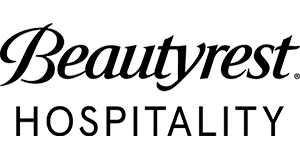Comfort and Convenience mark the Future in Sleep Innovation
By Abby Elyssa on June 7, 2019.
This article originally appeared on hotelbusiness.com
All guests want a restful, comfortable night’s sleep. And while many can agree that knowing the difference between a good experience and a not so good one is easy to do, knowing exactly why is less clear.
What makes a bed feel comfortable or not? What makes a mattress so supportive, or easy to fall asleep in? Bedding innovations are evolving in the industry, helping guests fall asleep more quickly and giving them an all-around more comfortable sleep.
Some beds are selling points for hotels, a true mark of a brand, while bedding for others is simply an essential feature of a hotel stay—one that, if not chosen properly, could negatively impact the guest experience.
“Better hotels typically pay a lot of attention to a comfortable bed; some hotels promote their beds as an integral part of their quality statement, so we suspect that some hotels focus more on quality bedding than others,” said Philip Shen, CEO of SleepChoices. “But, remember, if guests are not only able to enjoy great customer service from a hotel, but also able to fall in love with the bed that they sleep in, this can easily turn into a customer for life for that brand.”
Shen explained that even if a hotel doesn’t necessarily define itself as a luxury property, guests today still expect a “luxurious sleep experience.”
“The great news is that the market now has more innovative bedding products that can deliver this ultimate sleep experience, but at a very affordable price, so all types of hotels can access these solutions,” he said.
According to Shen, a good bed provides comfort for muscles, conformity (spreading the pressure points) and support (for the body weight while maintaining proper spinal alignment). On the contrary, if a guest is tossing and turning throughout the night, that’s usually the result of pressure points building up, possibly the result of an inadequate top layer. Additionally, sore muscles in the morning may be because of lack of support.
To solve these issues, Shen recommends hybrid beds (with a comfort layer over a support layer of pocket coils), which can replace the older pillow-top approach without body impressions that pillow tops can lead to.
“Hybrid beds have the supportive pocket coil layer below the comfort layers, hence the name ‘hybrid’—part foam and part spring; it’s the best of both worlds,” he said. “It’s also important for hoteliers to consider hybrid bed products that can deliver proper spinal alignment, keep the body cool while sleeping and add comfort while also mitigating pain.”
Keeping cool while sleeping is certainly a hot industry trend—temperature control presents myriad health benefits and adds to comfort, and many companies are catching on.
The emergence of connected sleep could provide the best experience possible for guests.
“The latest innovation in mattress technology is all about temperature management design—from the inside out,” said Kelley Weidner, VP, hospitality, Serta Simmons Bedding.
According to Weidner, it’s all about the layers at Serta Simmons, with fiber technology giving the first layer the power to absorb moisture with antimicrobial silver. Below that, foam can help circulate air, keep heat out and provide additional comfort.
For SleepChoices, innovations include seven-point zoning technology that features a zoned comfort (pressure reduction at shoulder and hip) in its latex-like (for resiliency and rebound) first layer.
“This insulates the sleeper from the memory foam layer and it provides grooved ventilation, a charcoal-infused memory foam layer to provide comfort and conformity, as well as to keep away moisture and keep the body cool with an antimicrobial knit cover,” Shen said.
Shen said the zone concept is not a new concept, but it is new to the hospitality industry. SleepChoices is currently working with Airbnb to begin introducing these types of mattresses.
Also new is incorporating more technology into bedding, allowing guests to control in-room functions via their bed—but that’s just where it begins.
“Connected sleep and all its potential benefits is certainly on the horizon and squarely in our sights,” Weidner said. “Given the amount of time a person spends asleep—a third of your life—imagine what a connected bed could do and learn about you? One that adapts to you and your sleep environment, whether you’re at home or in a hotel of your choice, and works in harmony with other connected devices to deliver the best sleep and recovery possible.”
These types of systems would be hidden and could track how guests sleep, their heart rates and potentially other biomarkers, Weidner said.
Other trends are more convenience-oriented, allowing guests to adjust mattresses, in-room temperature, lighting and sound. Shen said that massage beds are also on the rise, which are usually lower in price given their popularity, but he advises hoteliers to research and survey guests before incorporating these innovations.
“Hotels have to consistently evaluate the market for the best bedding solutions to ensure that they stay on top of the latest mattress innovations and sleep solutions in the marketplace,” Shen said. “This can set them apart from other brands in the industry.”

 Describe your business in one sentence.
Describe your business in one sentence.

